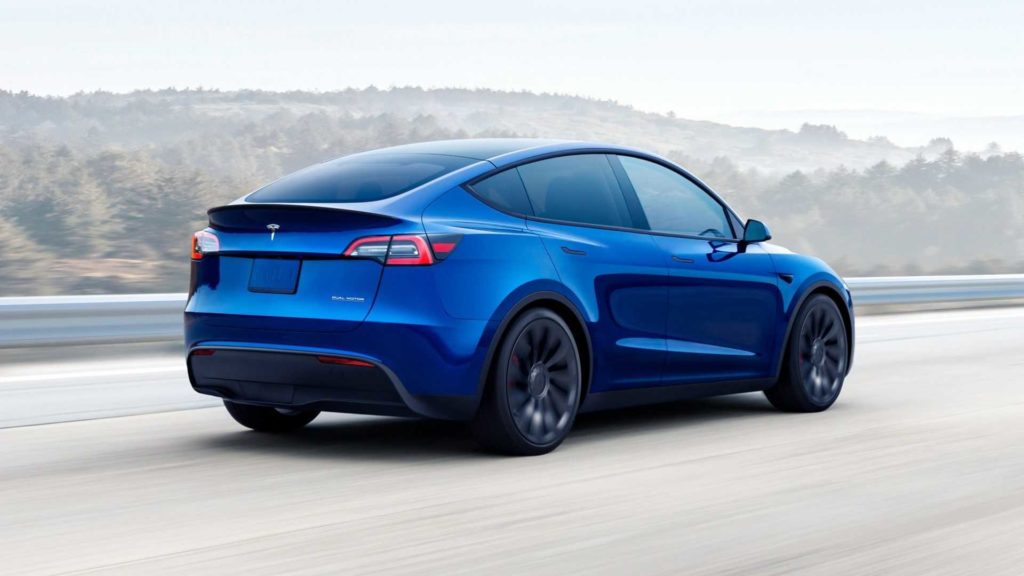[ad_1]
Of all the innovations Tesla has brought to the auto industry, not the least significant is the unified computer architecture used in its vehicles. This has enabled many of the wonderful Tesla-only features that owners rave about, and it’s not too much to say that it’s been one of the company’s greatest competitive advantages. Now current events are highlighting what could be another major benefit.
 |
Above: A look inside the Tesla Model 3 (Source: Tesla)
While researching my book, Tesla: How Elon Musk and Company Made Electric Cars Cool, and Remade the Automotive and Energy Industries, I was fortunate to be able to interview Tesla co-founder Ian Wright, who offered some keen insights about Tesla’s systems approach to its software, and this turned out to be one of my favorite parts of the book. I’ve referred to it in at least a dozen articles, and thanks to the ongoing semiconductor shortage, it looks like I’m going to get some more mileage out of it.
The young Tesla had roots in the Silicon Valley tech industry, and its vehicles were designed with a single computer operating system from the beginning. This was the opposite of the way the legacy automakers were (and mostly still are) doing things. A typical legacy vehicle has a patchwork of separate computers that control different systems in the vehicle. “I’m looking out the window at my 2008 Volkswagen Touareg, and I bet that’s got sixty or seventy electronic black boxes, three hundred pounds of wiring harness, and software from twenty different companies in it,” Ian Wright told me in 2014.
Consultancy Roland Berger recently told Bloomberg that automakers need to redesign cars to use fewer semiconductors. Automakers are hoping that the hated chip shortage will wind down soon, but Roland Berger predicts that severe bottlenecks will persist through 2022.
“Carmakers need to speed up the transition to centralized electronic architectures and thereby move to advanced and leading-edge nodes,” the analysts said in a recent report. A shift to a central design with a single onboard computer could drastically reduce the number of chips needed in a vehicle. Roland Berger says the average vehicle contains some 1,400 separate chips.
Yes, readers, my interview with Ian Wright took place seven years ago. He told me that the legacy automakers were “struggling” with the software design in their vehicles, and that if they continued to do things that way, they were “going to have a problem.” Well, now they have big problems. The consulting firm AlixPartners estimated that the chip crunch cost the auto industry some $210 billion in lost sales in 2021.
Above: A look into the global chip shortage (YouTube: Wall Street Journal)
Another issue is that legacy automakers don’t tend to use the latest and greatest chips. Part of the reason for the supply crunch is that chipmakers aren’t interested in increasing the supply of the older-generation semiconductors that are used in most cars. If automakers would regularly update their chips, as builders of computers and consumer electronics (and a certain California carmaker) do, they might find production capacity to be less of a problem.
EVs don’t necessarily use fewer semiconductors than legacy ICE vehicles—on the contrary, they tend to use more. EVs need to convert the AC power that comes from the grid into DC, which is stored in batteries (cars that use AC motors, as some Teslas do, need to convert again). This process is controlled by converter hardware, which requires large numbers of chips.
As Transport Dive reports, a typical diesel-powered truck uses around 500 chips, but an electric one could require up to 5,000. The chip shortage surely has something to do with the delayed launch of the Tesla Semi. Last October, Elon Musk announced yet another delay, saying that Tesla “should be through our severe supply chain shortages” by 2023.
Tesla has navigated the supply crunch more nimbly than other automakers, and we know that at least part of this was because it was able to nimbly switch to newer, more readily available chips. “In Q1, we were able to navigate through global chip supply shortage issues in part by pivoting extremely quickly to new microcontrollers, while simultaneously developing firmware for new chips made by new suppliers,” wrote Tesla in its Q1 2021 shareholders letter.
We can’t know exactly how much of an advantage Tesla’s unified computer architecture is proving to be when it comes to dealing with chip shortages, but to paraphrase Herman Melville, there’s nothing wrong with reporting a reasonable surmise if there’s evidence to support it. A unified architecture is plainly better. Tesla has it. Other automakers don’t.
Computer hardware and software are critical to the auto industry, and as the tetra-trend (electrification, connectivity, autonomy, new ownership models) continues, they’ll become even more important. For Tesla, computing is a core function, and this is yet another area in which the legacy OEMs must catch up, or, as Mr. Wright predicted with classic understatement, they’re going to have problems.
===
Written by: Charles Morris; Source: Bloomberg; Video: Wall Street Journal
[ad_2]
Source link
